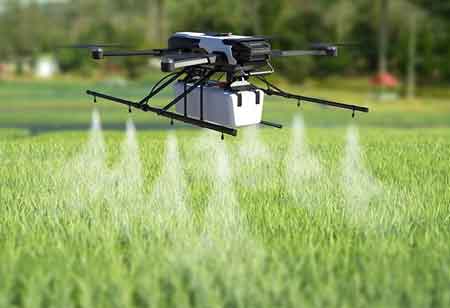Thank you for Subscribing to Agri Business Review Weekly Brief
An Analysis Of The Impact Of Artificial Intelligence On Agriculture
Big part of human activities is being remodelled by technology.

By
Agri Business Review | Saturday, December 17, 2022
Stay ahead of the industry with exclusive feature stories on the top companies, expert insights and the latest news delivered straight to your inbox. Subscribe today.
Crop yield prediction is essential for the global food production ecosystem. AI makes it feasible to make sensible decisions with better facts in hand.
Fremont, CA: Big part of human activities is being remodelled by technology. Agriculture is no exclusion. As newer crop and farm management methods become more famous, ideas like Smart Farming have acquired traction. It is altering farming into a more efficient and profitable business.
There are many factors to regard in the case of crop yield forecasting. Climate data, satellite photos, soil conditions, and insect attack possibilities are just a few. These elements deliver a comprehensive picture of the best times for crop production. Like any other industry, agriculture is advantaging from AI by building a platform for real-time analysis of factors like weather and soil conditions. Sensors scan for things like moisture content and pH level in the soil. A companion app delivers a complete tour of different portions of the field and crop health.
AI is having a favourable impact on agriculture in the following ways:
Automated surveillance of soil and crops
Since 1972, LANDSAT data has helped with agricultural monitoring. LANDSAT imagery is required for calculating crop productivity and monitoring water use, among other things. They're also helpful for field-level management, like identifying various conditions and growing yield using zone mapping.
Health analysis of crops
Drone-based image data can be utilised to monitor and find out crop health through GeoSpatial AI analysis. Drones gather data in the field and send it to computers for analysis. Algorithms in the system consider photos to decide farm health. The benefit is that pests can be determined, and reducing steps can be carried out to solve the issue.
Weather forecasting
Weather prediction is feasible through IoT-based sensors and historical data. Past data will often have a pattern, which the machine will employ to foretell future weather. Farmers will profit since they can select a favourable time to plant seeds and amass the crop.
Predictive analytics
Over the years, it has become a major precision farming component. Crop rotation, pest infestations, water management, nutrition management, and much more may all be examined using IoT devices. The gadgets then employ geographical analysis to develop rich insights that help improve agricultural production standards.





